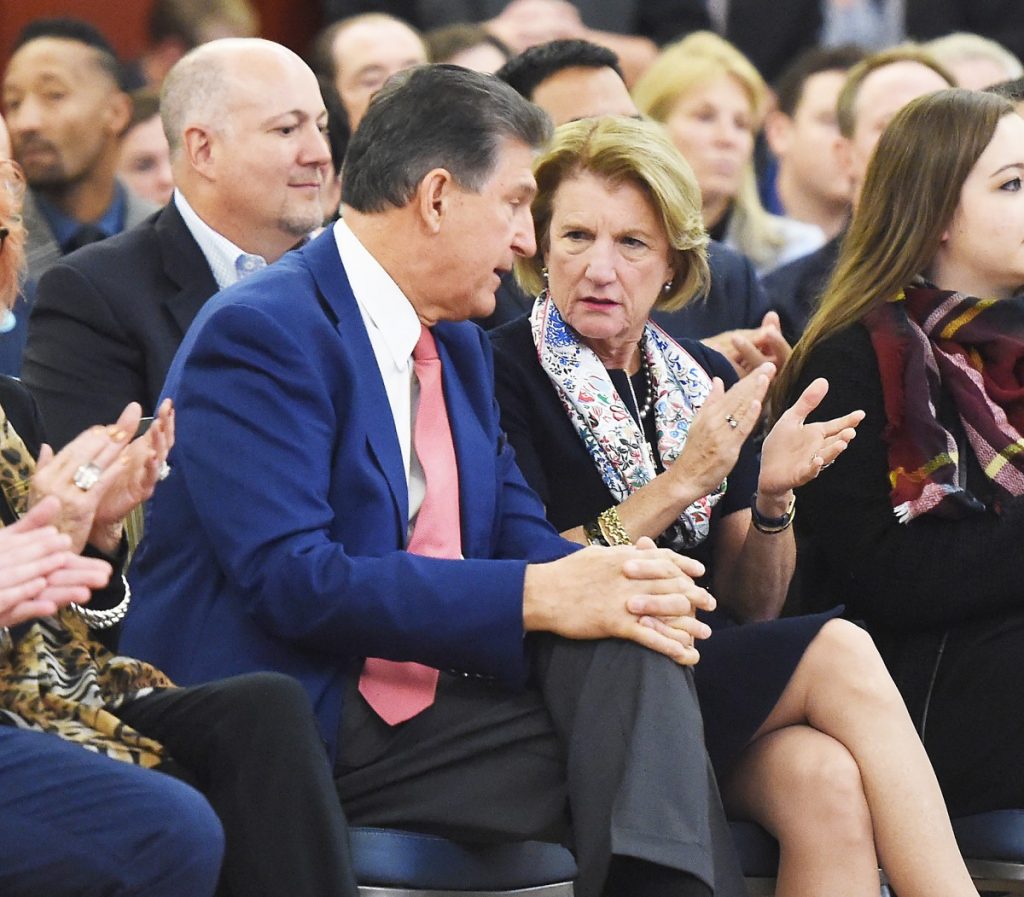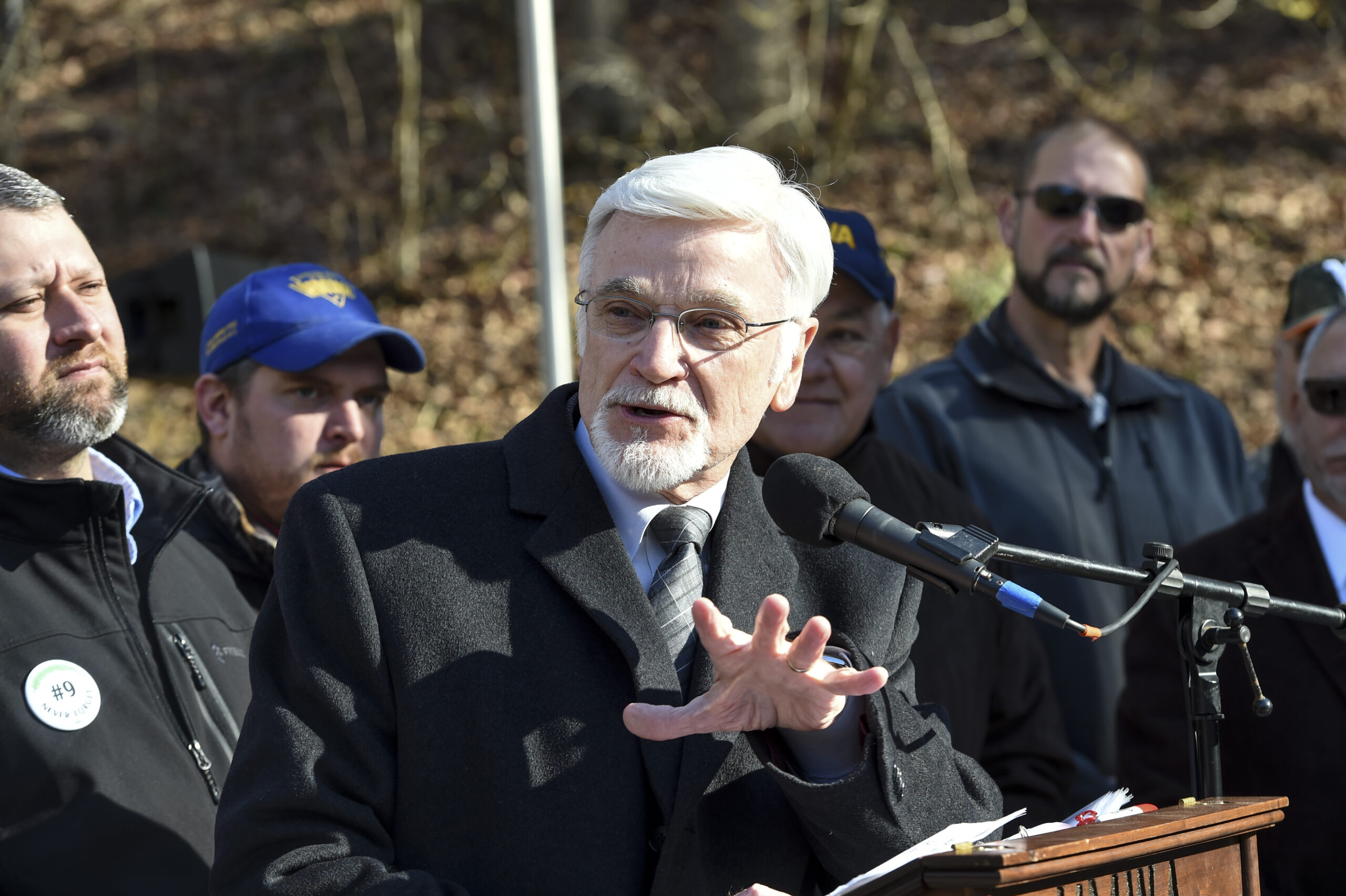MORGANTOWN –The United Mine Workers of America is opposing a plan put forward by two leading Republican U.S. senators to rescue imperiled multiemployer pension plans across the nation.
UMWA President Cecil Roberts said in a press release that the Multiemployer Pension Recapitalization and Reform Plan – sponsored by Senate Finance chair Chuck Grassley, R-Iowa, and Senate Labor & Pensions chair Lamar Alexander, R-Tenn. – does nothing to address the immediate peril of the UMWA’s failing pension plan, and would impose undue financial burdens on its retirees.
“This is not a starting point for negotiations,” Roberts said. “It is a multi-billion dollar tax increase on working families – especially retired Americans living on fixed incomes – their employers and their unions. Retirees covered by the UMWA Pension Fund, for example, would be subject to a 10% tax on pensions that average a little under $600 per month.”

The UMWA continues to favor the plan put forward by Sen. Joe Manchin, D-W.Va., and cosponsored by Sen. Shelley Moore Capito, R-W.Va.: the Bipartisan American Miners Act. The act is sitting in Grassley’s committee but has the advantage of recent cosponsorship of Senate Majority Leader Mitch McConnell, R-Ky.
The Dominion Post asked Manchin and Capito for their views of the Grassley-Alexander plan – it hasn’t been introduced as a bill yet – and about the politics at play, given Grassley has control over progress of the Miners Act.
Machin declined to comment on Grassley’s plan but his office said his “number one priority right now is passing the Bipartisan American Miners Act. With Sen. McConnell cosponsoring his legislation, he believes we can pass it before the end of the year and we need to. Without Congressional action, 13,000 miners and their widows lose their healthcare and 92,000 will lose their pensions in the coming year. The time to act is now.”
Capito is also focused on the Miners Act, The Dominion Post learned, and working to see it passed. She doesn’t view the Grassley-Alexander proposal as a problem. It’s designed to spur conversation about how to address other multi-employer pension plans; but the conversation about saving the UMWA plan is the immediate concern.
What’s at stake
The 1974 United Mine Workers of America Pension Plan is headed for insolvency by 2022 due to coal company bankruptcies and the 2008 financial crisis. The lawmakers said the pensions of 100,000 retirees – averaging just $586 per month –are at stake.
The pending bankruptcy of Murray Energy, the single largest remaining contributor to the fund, could accelerate that failure by two years, Manchin and others have said.
Roberts summarized it: “Retired miners, their families and widows do not have the luxury of waiting to see if Congress can eventually come up with a comprehensive solution to the multi-employer pension crisis that treats retirees fairly; 1,200 stand to lose their health care at the end of this year, 12,000 more will lose health care within a few short months, and more than 82,000 will likely see drastic cuts to their pensions a few months after that.”
The Bipartisan American Miners Act would amend the Surface Mining Control and Reclamation Act of 1977 to require the Treasury Department to transfer additional funds to the UMWA pension plan from excess Abandoned Mine Reclamation Fund money. The bill also increases the annual limit on transfers from $490 million to $750 million.The bill also will amend the Coal Act to include the 2018 and 2019 bankruptcies in the miners’ health care fix that passed in 2017.
More broadly, West Virginia’s federal lawmakers have explained, various multiemployer pension plans are on the verge of insolvency. If the plans are allowed to fail, they no longer will be able to pay promised benefits, and taxpayers and small businesses would be at risk of having to pay billions because the Pension Benefit Guaranty Corp. would be on the hook for billions of dollars it cannot pay. PBGC is the arm of the federal government that insures pension plans; it is currently funded not by tax dollars but by employer contributions.
The Grassley-Alexander plan
The GOP senators spell out their plan in a 12-page white paper and a 77-page technical explanation.
In a brief introduction, they say the multiemployer pension system promises benefits to more than 10 million workers. Around 125 multiemployer plans are in “critical and declining” status and will become insolvent over the next two decades, and several in the next few years, if they keep their current benefit levels. This will leave more than 1.3 million participants without their promised benefits.
Another large group of participants are in “critical status” plans that do not expect to meet minimum-funding requirements of the law, they say.
The senators say in their white paper that PBGC’s premium-based funding is falling short of liabilities. As of Nov. 18, the program had a $65.2 billion deficit: $68 billion in liabilities, primarily for plans that are likely to become insolvent in the next decade and only $2.9 billion in assets.
“Unless Congress acts to increase premiums and fundamentally reform the system, current law requires PBGC to reduce guarantees to only the amount payable from incoming premiums, which will result in participants receiving only a small fraction of the benefit guarantees they currently are eligible to receive.”
Their reform plan proposes a number of changes.
— New premium structure to broaden the base upon which premiums are assessed. The new structure applies a co-payment to active workers and retirees. They say the co-payments are significantly less than the amount of the typical benefit cuts retirees would face under current law if a plan should fail. Older retirees and disabled participants will be protected. The co-payments would also fund an increase in the guaranteed benefit level for the vast majority of participants in the system.
— Partitioning is already allowable under law. It permits financially healthy employers to maintain a plan by carving out plan liabilities attributable to participants who have been “orphaned” by employers who have exited the plan without paying their full share of contributions. “Partitioning is akin to creation of a ‘healthy pension’ that continues in a healthy fashion and a separate ‘sick pension’ that requires attention and assistance from the PBGC.
PBGC may order partitions, they say, but rarely does because the standards are too hard to meet and might jeopardize the solvency of PBGC. Their plan expands PBGC’s ability to take over the sick part of a troubled plan, allowing the healthy portion of the plan remains financially viable.
— Increasing PBGC Multiemployer Insurance Guarantee . Under current law, PBGC has separate guarantee programs for single-employer plans and for multiemployer plans. The proposed reforms include an increase in the guaranteed benefit level for multiemployer plans to provide participants more insurance against underfunding – PBGC’s guaranty would cover more of their earned benefits given a higher maximum guarantee level if their plan became insolvent.
— Plan financing. PBGC’s premiums are set by Congress and are a key determinant of whether PBGC has enough money to pay all benefits in the future or whether the agency runs a deficit and itself faces insolvency. The plan proposes to raise the current flat-rate premium from $29 per participant to $80, to match the contributions required of private-sector single-employer plans.
— The proposal also creates a new stakeholder co-payment assessed on all employers and unions participating in a plan, and a sliding-scale co-payment applied to retirees receiving benefit payments from a plan, based on the plan’s funding status. “In no case, however, would the retiree co-payment be higher than 10 percent, and it will be substantially less than the benefit cuts retirees face under MPRA, which begin at 20 percent and many cases, can be much higher.”
They say the retiree co-pays change with age and health status of the retiree and generally exempt elderly and disabled retirees.
“This structure ensures that the individuals who most directly benefit from the reforms to the multiemployer system bear a meaningful but not burdensome cost of the reforms and take a direct stake in providing a safe-and-sound, financially healthy, multiemployer pension system for the future.”
— The plan also includes changes to withdrawal liability, which has been ineffective at discouraging employers from exiting the plan and leaving it underfunded.
— It proposes new actuarial methods that would, they say, more accurately project plans’ financial status. And it would allow employers to exit the PBGC system by creating composite plans that blend features of defined benefit pension and defined contribution plans.
(In defined benefit plans, employers guarantee a set retirement benefit; in defined contribution plans, employees set aside a portion of their wages for investment in a retirement fund, with an employer match.)
“The option for employers to participate in a composite plan will provide these employers more certainty in their retirement-plan funding obligations, by fixing contributions amounts, removing risk to employers for investment losses, and through relief from liability rules related to the exit of contributing employers from multiemployer plans. Employees gain access to secured lifetime income and more certain streams of employer contributions backing their promised benefits.”
They note that “limited federal taxpayer resources” will have to be channeled to PBGC to make the plan work.
UMWA objections
Roberts said of the plan, “This proposal provides everything those who advocate against working families have ever wished for. It penalizes workers for joining unions, it penalizes retirees for sticking with those unions, it penalizes employers for recognizing unions and it penalizes unions themselves for successfully representing their members. “
UMWA spokesman Phil Smith elaborated on that on Monday. “It penalizes workers by putting so much cost on multi-employer pensions plans, and changing the way that plans make actuarial assumptions, it will be impossible to have a successful plan in the future. That is a direct hit to the ability of workers to have a defined benefit pension, which is immensely better than a defined contribution pension.”
Smith said the Grassley proposal also imposes a tax of $2.50 per month per active worker on whose behalf pension contributions are being made, payable by the employers and the unions.
“First of all, this assumes that employers and unions are somehow responsible for the situation multi-employer pension plans are in, which is ludicrous. But secondly, for unions with hundreds of thousands of active members in multi-employer plans – like SEIU or IBEW – they could be looking at $300,000-$500,000 per month in payments. If that’s not penalizing them I don’t know what is.”
The bottom line for UMWA, Roberts said: “We continue to strongly urge House and Senate leadership – all of whom say they want to address the immediate crisis retired miners face – to put partisanship aside and pass the Bipartisan American Miners Act. These senior citizens, who provided the fuel to power America at great risk of life and limb, need action now. Let’s get this done.”
Tweet David Beard @dbeardtdp Email dbeard@dominionpost.com




